<< Previous | Displaying results 4961-4970 of 6776 for "" | Next >>
During the 1936 Olympics in Berlin, US runner Jesse Owens begins the 200-meter race in which he established a new Olympic record of 20.7 seconds. Berlin, Germany, August 2, 1936.
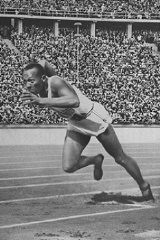
Repairs and improvements are made to the courtroom where the International Military Tribunal trial of war criminals would be held. The holes in the walls at the top (when completed) housed radio commentators and public address operators. September 11, 1945.
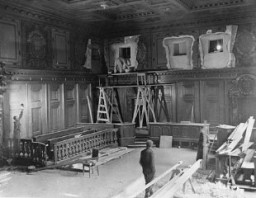
The courtroom in the Palace of Justice, chosen as the location for the International Military Tribunal trial of war criminals. This photograph shows the courtroom before any repairs or alterations were made. Nuremberg, Germany, August-September 1945.
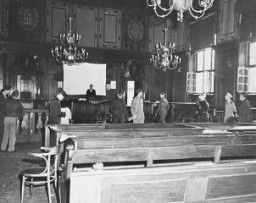
View during the remodeling of the Palace of Justice in Nuremberg in preparation for the International Military Tribunal. Nuremberg, Germany, 1945.
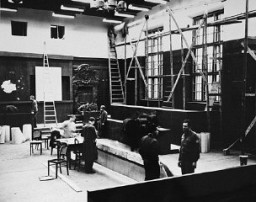
View of the interpreters' section in the courtroom during the International Military Tribunal. Nuremberg, Germany, March 29, 1946. The Nuremberg trials were an early experiment in simultaneous translation. The charter of the International Military Tribunal stated that the defendants had the right to a fair trial and that, accordingly, all proceedings be translated into a language that the defendants understood.
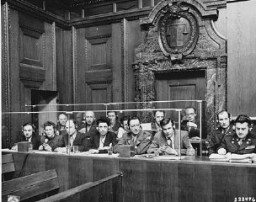
View of the Palace of Justice (left), where the International Military Tribunal trial was held. Nuremberg, Germany, November 17, 1945. The Palace of Justice was selected by the Allied powers as the location for the International Military Tribunal (IMT) because it was the only undamaged facility extensive enough to accommodate a major trial. The site contained 20 courtrooms and a prison capable of holding 1,200 prisoners.
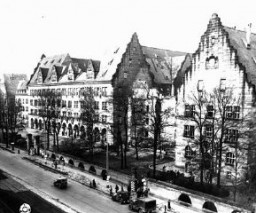
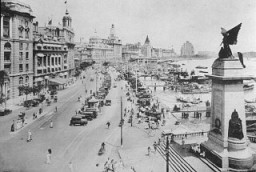
German Jewish refugee Erwin Eisfelder stands outside Cafe Louis on Ward Road. The cafe was named in honor of his father. It was a popular gathering place for refugees in Shanghai during the war years. Shanghai, China, ca. 1944.
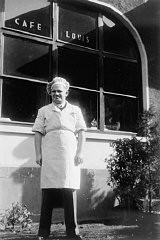
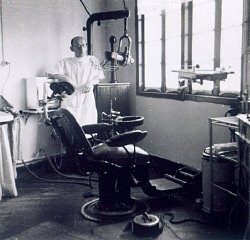
German Jewish refugee artist David Bloch. In November 1938 Bloch was interned for several weeks in the Dachau concentration camp near Munich. With the help of his brother in the United States, he escaped from Germany to Shanghai in May 1940.

We would like to thank Crown Family Philanthropies, Abe and Ida Cooper Foundation, the Claims Conference, EVZ, and BMF for supporting the ongoing work to create content and resources for the Holocaust Encyclopedia. View the list of donor acknowledgement.